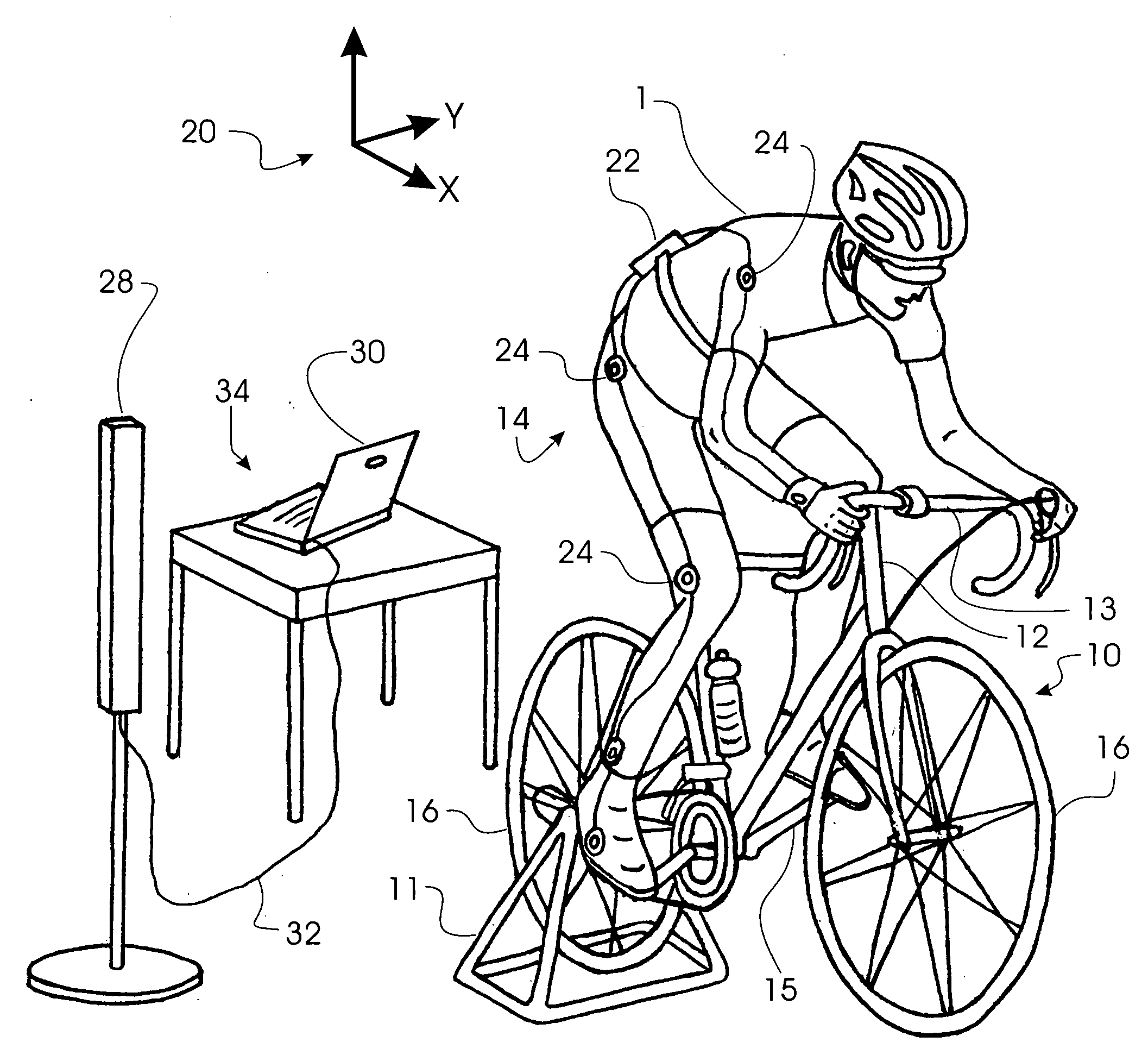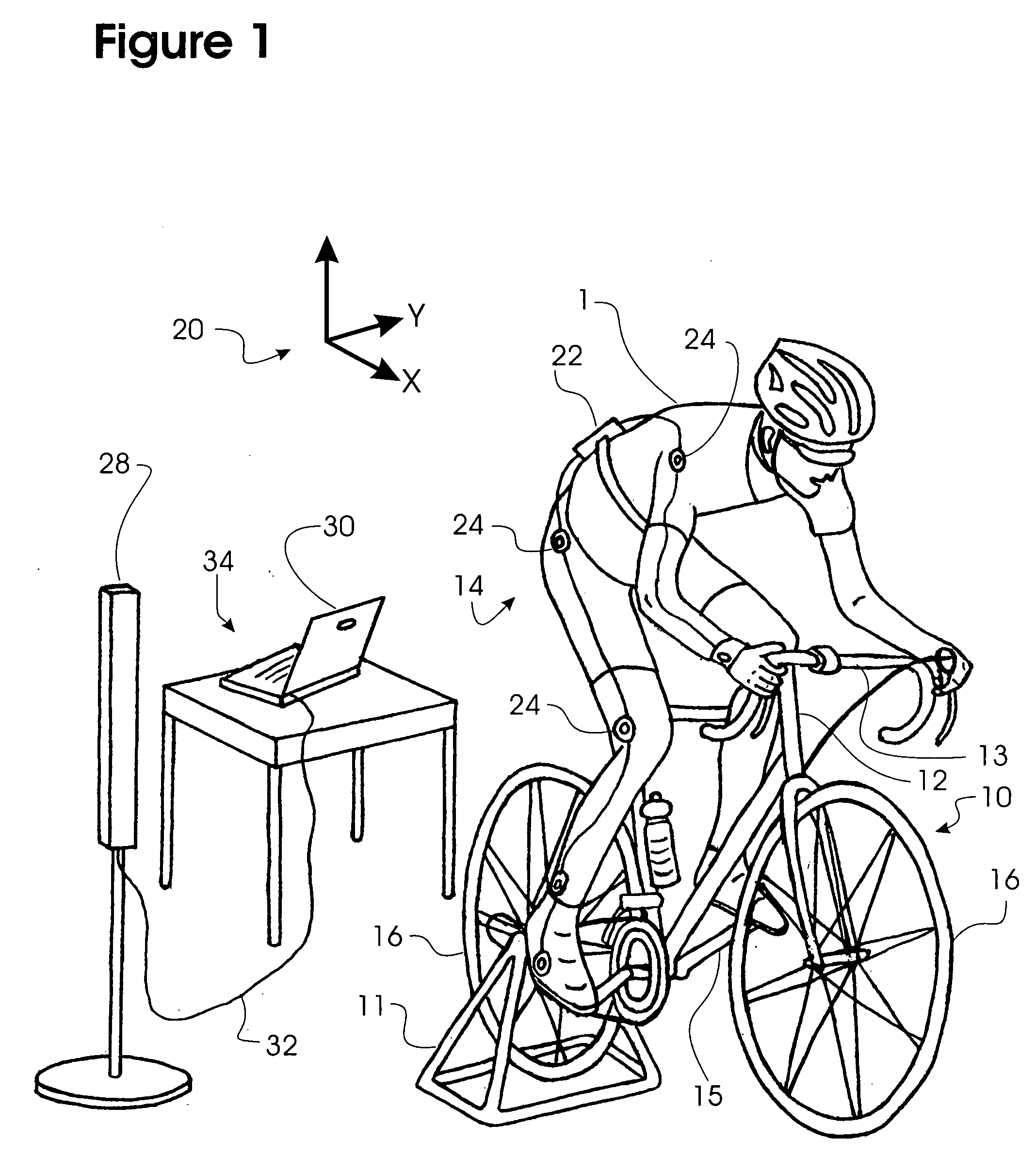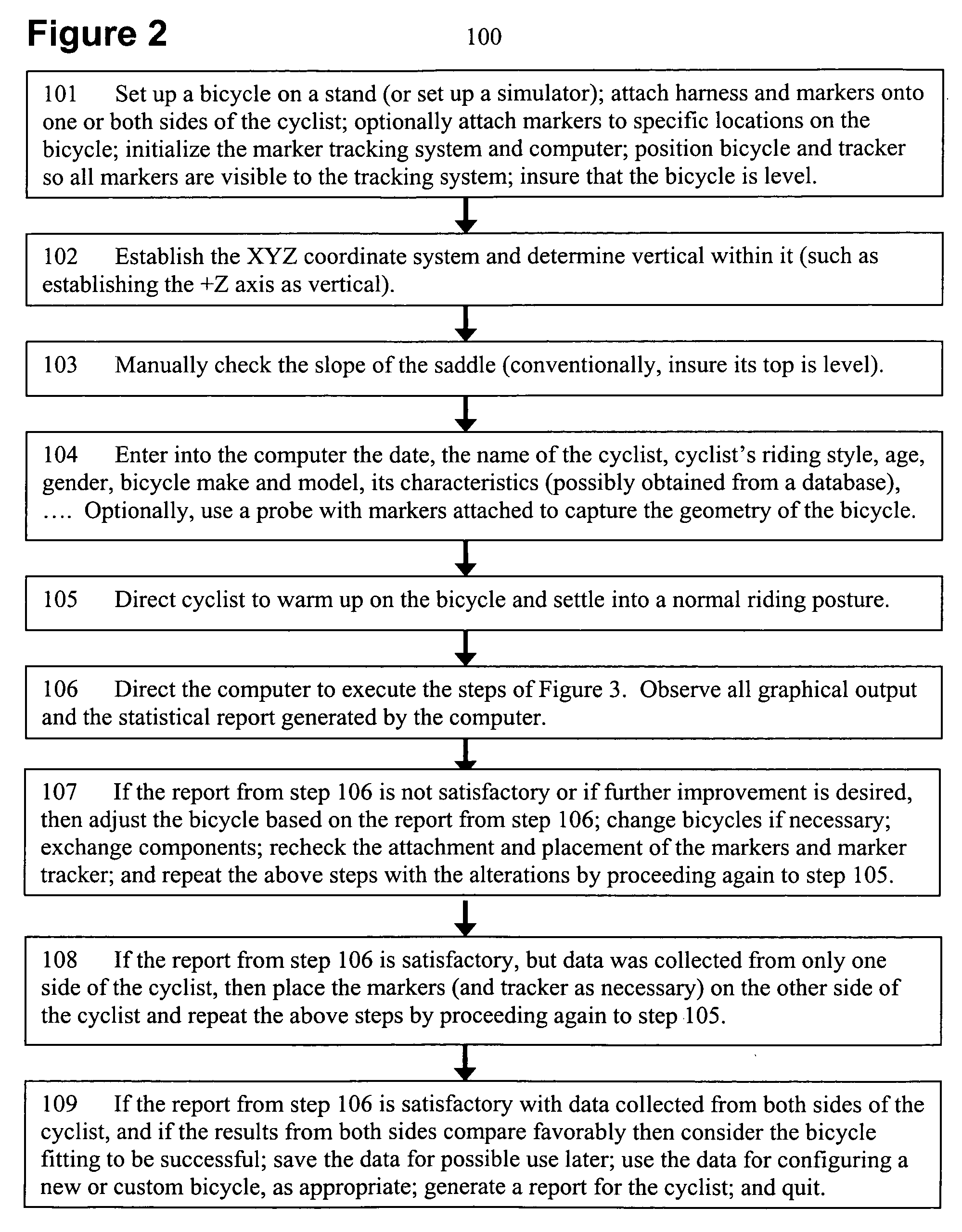Computerized method and system for fitting a bicycle to a cyclist
- Summary
- Abstract
- Description
- Claims
- Application Information
AI Technical Summary
Benefits of technology
Problems solved by technology
Method used
Image
Examples
Embodiment Construction
[0036] A preferred embodiment of this invention, as an apparatus, is shown in FIG. 1. FIG. 1 includes a cyclist 1, which of course is not part of the invention apparatus proper, and it shows a conventional bicycle 10. The bicycle comprises a frame 12, handlebar 13, saddle 14, each of two pedals 15, and (generally) each of two wheels 16. Because the bicycle must be pedaled in a stationary location, a support stand 11 is normally required. The support stand 11 should allow the rear wheel to rotate but hold the bicycle in a stationary and level position. The bicycle may be one owned and supplied by the cyclist, may be a potential purchase by the cyclist, may be an exercise bike, or may be an adjustable trainer or simulator (such as one designed specifically for fitting purposes). In the latter two cases, there may be less than two wheels 16 and the support 11 may be built in, but there will be some sort of frame 12, handlebar 13, saddle 14, and two pedals 15 which presumably are offset...
PUM
 Login to View More
Login to View More Abstract
Description
Claims
Application Information
 Login to View More
Login to View More - R&D
- Intellectual Property
- Life Sciences
- Materials
- Tech Scout
- Unparalleled Data Quality
- Higher Quality Content
- 60% Fewer Hallucinations
Browse by: Latest US Patents, China's latest patents, Technical Efficacy Thesaurus, Application Domain, Technology Topic, Popular Technical Reports.
© 2025 PatSnap. All rights reserved.Legal|Privacy policy|Modern Slavery Act Transparency Statement|Sitemap|About US| Contact US: help@patsnap.com



